Ertach Kernow - Richard Trevithick Cornwall's great son remembered
Richard Trevithick one of Cornwall's greatest sons is remembered this month especially as it marks the 250th anniversary of his birth on 13th April, also his death 62 years later on 22nd April. There is little doubt that Trevithick made a massive contribution to Cornwall and Britain during the British industrial revolution, creating the richest global economy and making Britain the workshop of the world at the forefront of 19th century innovation.
Much has been written about Trevithick, but only in later years is he getting the full recognition that he deserves. As a schoolboy I along with many others, especially in England, were taught in history about the industrial revolution and names such as James Watt, George Stephenson and Brunel were the ones who mattered. Cornish history and the fact that Cornwall was at the forefront of the industrial revolution, making huge contributions, was washed over or omitted totally.
This short article can only touch on the life of Richard Trevithick, but hopefully through it, more people will be encouraged to learn more about this great Cornishman, especially those new to Cornwall.
Richard was the only boy of the six children born to mining Captain Richard Trevithick and Ann Trevithick née Teague at Tregajorran in the parish of Illogan in 1771. Known as the Cornish Giant, being exceptionally tall for this period at 6’ 2’’. He was athletic but not at all academic apart from arithmetic at which he excelled, albeit unconventionally. Starting his mining career at age 19 he soon became a consultant and become well known for his engineering knowledge. He married Jane Harvey of Hayle and had six children. One, Francis (1812-1877) would become a highly respected engineer himself and write a biography of his father published in 1872. His wife, Jane was the daughter of John Harvey who would establish the important Cornish foundry and engineering works Harvey & Co at Hayle. They would have a reputation for building high quality engines, which would be exported around the world.
James Watt had improved greatly on the Newcomen steam engines that had been used in Cornish mines from about 1715. The original Newcomen engines were important to the development of the Cornish mining industry but were inefficient using vast amounts of coal. This was costly as coal needed to be imported by sea from South Wales. The Watt steam engines were much improved but were still somewhat inefficient and expensive to purchase. Trevithick started designing and building his own, initially these were stationary engines and used primarily for mining purposes extracting water from the mines in Cornwall.
There were others in Cornwall who were actively working on their own steam power projects due to the wealth and importance of the Cornish mining industry. Trevithick interacted with many including William Murdoch from Scotland who lived close by during 1797/98 and Arthur Woolf Chief Engineer at Harvey & Co. Murdoch worked for Bolton & Watt and spent much time in Cornwall working on their engines. Watt was very active in ensuring his patents weren’t infringed and Trevithick had been issued with papers for breach of patent. Murdoch had worked on a project using high pressure steam, and shown Trevithick a working model, but through his Bolton & Watt employment James Watt prevented this continuing. Trevithick would go on to carry out his own projects and produce ‘strong steam’ or high-pressure engines in due course. His son Francis wrote that Trevithick was the first to make high-pressure steam work in England in 1799, some say earlier. High-pressure steam engines eliminated the condenser, allowing a smaller cylinder, saving space and weight. Trevithick now believed his engine more compact, smaller and lighter could carry its own weight including a wagon attached.
In 1802 Trevithick took out his own high-pressure patents, totally circumventing Watt’s low-pressure patents, and built an engine for the Coalbrookdale Company with 40 strokes a minute and unprecedented pressure of 145psi. Trevithick also built an engine for the Penydarren Ironworks at Merthyr Tydfil; this was successfully temporarily converted into a locomotive. A 1981 reconstruction can be found at the National Waterfront Museum in Swansea.
In 1808 the ‘Catch Me Who Can’ was built and demonstrated at the Steam Circus, Euston in London. The engine ran on a circular track and cost 1 shilling, probably too much for most people to afford and received little interest. Discouraged, this was Trevithick’s last locomotive. He had however demonstrated the concept was successful and his mantle would later be taken up by others leading to the railway industrialisation of Britain.
Trevithick’s exploits far too many to mention here included liaising with the Brunel’s on the London Thames Tunnel, travelling to Peru and South America on a number of mine related projects, as well as exploring Costa Rica on foot. He even joined the army of Simon Bolivar who led a number of South American countries to independence from the Spanish Empire.
On his return he worked on other smaller projects such as the close cycle steam engine in 1829 and a room storage heater in 1830. In 1832 he was invited to work in Dartford by engineering firm J & E Hall. It was here that Richard Trevithick died at the Bull Inn on 22nd April 1833 from pneumonia. Despite earnings from this latest job, he died in poverty and his work colleagues paid for his paupers funeral, even to the extent of a guard to prevent grave robbers stealing his body. Trevithick continues to be remembered in Dartford with the annual ‘Trevithick's Industrial Dartford's Steam Rally’. In Cornwall, Camborne holds the annual Trevithick day celebrations. The Trevithick Society, besides running a replica of the ‘Puffing Devil’, also carries out a terrific amount of work preserving and sharing knowledge about Cornwall’s industrial heritage. Today there is greater appreciation for Trevithick and his work that helps perpetuate his name and contribution to Britain’s industrialisation.
In the biography on his father, published in 1872, Francis Trevithick concluded with words from a letter written by Richard Trevithick to Davies Gilbert a few months before his death. “I have been branded with folly and madness for attempting what the world calls impossibilities, and even from the great engineer , the late Mr James Watt, who said to an eminent scientific character still living, that I deserved hanging for bringing into use the high-pressure engine. This so far has been my reward from the public; but should this be all I shall be satisfied by the great secret pleasure and laudable pride that I feel in my own breast from having been the instrument of bringing forward and maturing new principles and new arrangements of boundless value to my country. However much I may be straightened in pecuniary circumstances, the great honour of being a useful subject can never be taken from me, which to me far exceeds riches.”
Richard Trevithick, Cornwall remembers and salutes you.
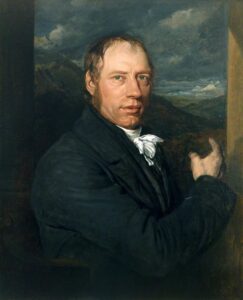
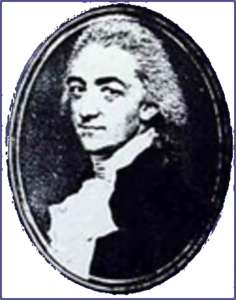
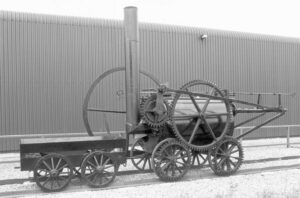
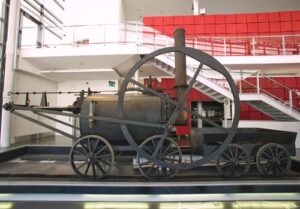
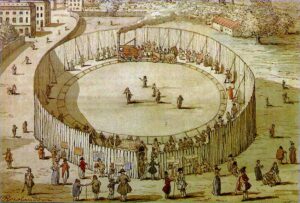
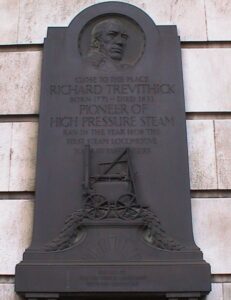
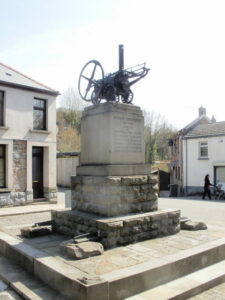
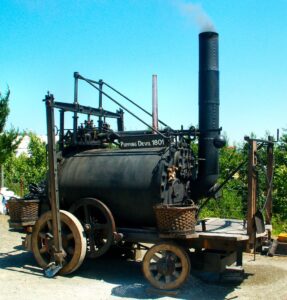
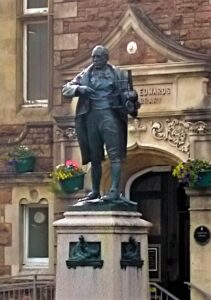
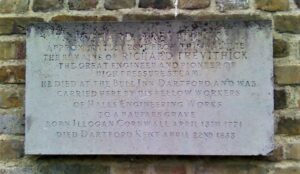
![[44] Voice - Ertach Kernow-280421A - A salute to the great Trevithick [S] Ertach Kernow - A salute to the great Trevithick](https://www.cornwallheritage.com/wp-content/uploads/2021/04/44-Voice-Ertach-Kernow-280421A-A-salute-to-the-great-Trevithick-S-234x300.jpg)
![[44] Voice - Ertach Kernow-280421B - A salute to the great Trevithick [S] Ertach Kernow - A salute to the great Trevithick](https://www.cornwallheritage.com/wp-content/uploads/2021/04/44-Voice-Ertach-Kernow-280421B-A-salute-to-the-great-Trevithick-S-230x300.jpg)